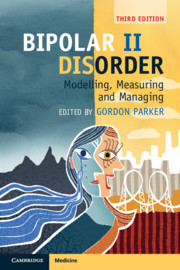Section 2 - Management Commentaries
Published online by Cambridge University Press: 17 December 2018
- Type
- Chapter
- Information
- Bipolar II DisorderModelling, Measuring and Managing, pp. 211 - 288Publisher: Cambridge University PressPrint publication year: 2019

